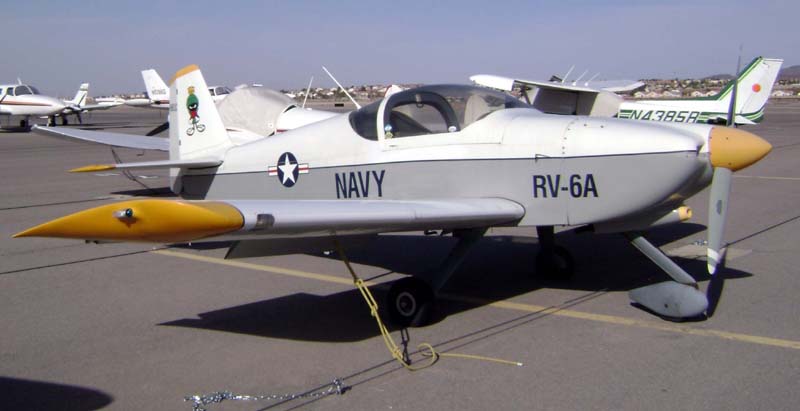| Vans | ||||||||||
|
RV-6 # |
||||||||||
 |
||||||||||
|
Photo: Robert Deering 3/30/2010 Henderson Executive Airport (HND) Henderson, Nevada |
||||||||||
|
The Van's RV-6 and RV-6A are two-seat, single-engine, low-wing homebuilt airplanes sold in kit form by Van's Aircraft. The RV-6 is the tail-wheel equipped version while the RV-6A features a nose-wheel. The RV-6 was the first aircraft in the popular Van’s RV series to feature side-by-side seating and the first to offer a nosewheel option. It was first flown in 1985. Over 2400 kits have been completed and flown. The RV-6 kit has been superseded by the similar, but improved, RV-7. Kit components are still available to allow builders to complete RV-6s under construction, but no new complete kits are available. Van’s Aircraft designer, Richard VanGrunsven, designed the RV-6 series as a two seat side-by-side development of the RV-4, which was itself a development of the single seat RV-3. Market demand motivated VanGrunsven to design the RV-6 and offer it as an optional nosewheel design. The original two seater RV-4 has been a remarkable success, but the tandem seating configuration was not considered ideal by many potential owners as it leaves the passenger isolated in the back seat. Many female spouses of builders especially favoured the side-by-side configuration over the tandem arrangement. VanGrunsven worked diligently to create a side-by-side design with a generous 43-inch-wide (1,100 mm) cockpit that did not sacrifice the RV-4’s handling, STOL performance and especially its high cruise speed. In the end the RV-6 prototype produced cruise speeds that are only 3 mph slower that the RV-4 with the same engine. The first RV-6s had a forward hinged canopy design. This was a simple one-piece arrangement, but it made taxiing the aircraft with the canopy open more difficult. Later kits had the option of a rearward sliding canopy that could more easily provide ventilation on the ground. The RV-6A version features steel rod landing gear with the nosewheel strut attached to the engine mount. The nosewheel is friction castering and the aircraft is steered with differential braking. The brakes are mounted conventionally on the rudder pedal toes. |
||||||||||
|
||||||||||
